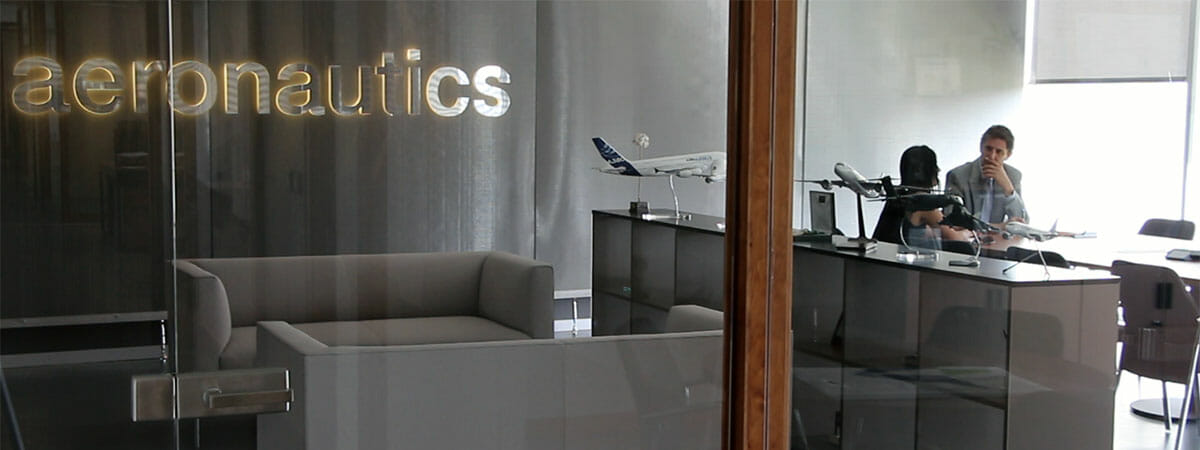The aeronautical industry has always stood out for its exceptional levels of technology and innovation, which go hand in hand with the activities it carries out. And this is also reflected in the context of human resources.
This industry is characterised by massive diversity in terms of profiles, generations and nationalities. Multiculturalism and diversity make it possible to access more knowledge and enhance creativity and innovation, but they can also give rise to workplace tension and communication problems. Maintaining the right balance is always crucial, and this has to be worked on during the processes of recruitment and internal communication, as well as in training and personal development.
The aeronautical industry is a highly specialised field, and it therefore requires complex and demanding recruitment processes.
Another key aspect is that the workforce is increasingly digital, diverse, global and efficient with regard to social media and automation. The challenge for Human Resources is to learn how to bridge the gap between the team’s new needs and current business requirements. This requires digital leaders who know how to build and manage teams, keep people connected and loyal, and promote a culture of innovation, learning and continuous improvement. Aeronautical companies are therefore increasing their efforts towards managing employment branding, and brand image is being intensively worked on in order to better project the companies, so that they can attract and retain the top talent.
If we try to describe the personality that defines aeronautical workers, we could say that in general the predominant traits are those of being rational, perfectionist, cerebral, precise, logical, disciplined and reserved. In reality, each person has a different profile, and the key to Human Resources management lies in getting the best out of those differences, getting to know employees better and knowing what they like, what motivates them and what factors they react well or poorly to.
Another challenge we face, as in other business sectors, is the management and loyalty of the Millennial generation. To achieve this, we work on understanding and improving the employee’s experience, breaking down hierarchical structures and using models focused on teamwork.
Another important point is communication, as a tool to compensate for decentralisation. Companies in the aeronautical sector usually have a large proportion of their human team distributed across different locations, in the client’s facilities or in countries where projects are being carried out. The aim and the challenge is to improve employees’ sense of identification and general knowledge of the company’s mission and values.
Finally, the working method is very organised and methodical. There is a high volume of work and it is essential to respond with agility in the field of human resources.
All this leads us to one of the most complex tasks in a company: the recruitment process, where it is essential to be very clear about what is important and exactly what is being sought.
The recruitment and hiring process is a set of stages or steps that aim to select and hire the most suitable personnel for a job. In this sector, some of the peculiarities mentioned above condition some parts of the process.
In order to define the profile, and given the specialisation of profiles in this sector, it is necessary to meet with the person in charge of the area and investigate the activities that the new employee is going to carry out, the duration of the project, the necessary technical knowledge, the required experience, etc. The positions can have very specific nomenclature and functions; for example, PMO, Industrial Means, Jigs & Tools Designer, Retrofit A400M System Engineer, MRTT, L&M Manufacturing Engineer, Scrum & Agile, etc.
We then move on to the recruitment stage, which consists of searching for or calling for candidates who have the competencies and characteristics defined in the previous step. Some of the methods that can be used include online advertisements, the company’s own website, recommendations, job fairs, employment agencies, human resources consultants, internal promotion and the company’s own database, which will already have hundreds of CVs.
When we move on to the evaluation stage, it can be divided into pre-selection and selection. Pre-selection is the elimination of curricula that do not meet the criteria or do not have a pre-determined level of excellence, whereas the selection stage usually includes the preliminary interview, remote or face-to-face knowledge test, interview or group dynamics.
Aeronautical companies must be demanding, and must establish a set of requirements that result in an excellent selection process. There are some aspects that can be crucial, such as the writing quality in the CV and cover letter, language skills, academic record, references, personality, knowledge of a specific technology, etc. Often, knowledge of certain applications, programmes or tools can also constitute a barrier (or an opportunity) for selection, since it can become very specific: Catia V5, Airnav, Pelicano, Zamiz, Demat, etc. Requesting this kind of experience usually limits the search to people who have worked in the client’s facilities before.
Once all the candidates have been evaluated, the most suitable candidate is selected to fill the vacant position, and a job offer is sent in contractual terms.
In an industry such as aeronautics, where excellence is one of the fundamental goals, a well-designed recruitment process plays a key role in allowing professionals and the company to improve together.



